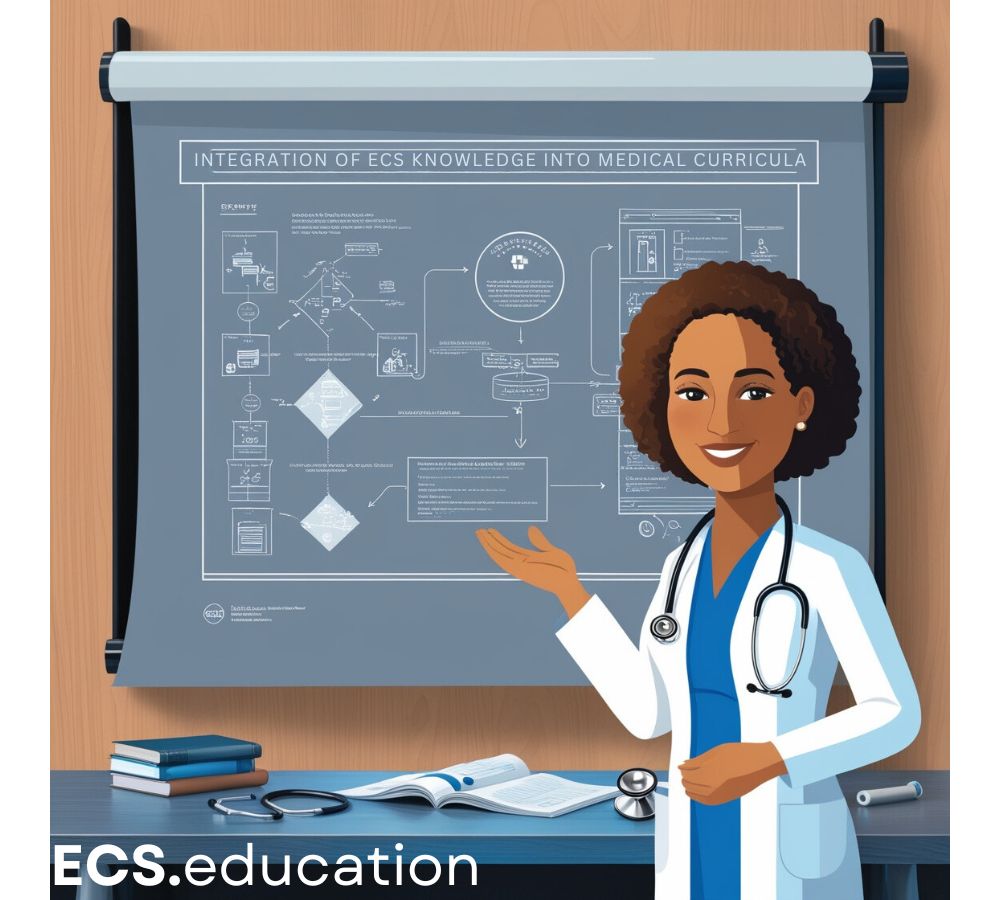Executive Summary
An analysis of the Physiological Society’s 2020 “Physiological Objectives for Medical Students” curriculum guide reveals a critical gap: the complete omission of the Endocannabinoid System (ECS).
This official curriculum guidance document, which establishes core physiological knowledge for new doctors, overlooks a system fundamental to maintaining homeostasis across multiple physiological processes. The implications of this omission extend far beyond medical education into clinical practice.
The Depth of Omission
The document’s organization makes the exclusion particularly evident across multiple critical areas. A systematic review of each section reveals specific opportunities where ECS knowledge would enhance understanding of core physiological concepts:
Core Concepts in Physiology
While meticulously detailing homeostasis, allostasis, and feedback mechanisms, it omits the ECS – a system that exemplifies all these concepts. Understanding the ECS would provide students with a perfect model of how feedback systems maintain physiological balance, particularly in stress adaptation and environmental responses.
Cells and their Environment
Despite covering membrane signaling and cellular regulation, the document excludes CB1 and CB2 receptors and endocannabinoid signaling. This omission leaves students without understanding of retrograde signaling mechanisms crucial for cellular communication and synaptic regulation.
Nervous System
The neurotransmitter section lists major excitatory and inhibitory transmitters but overlooks retrograde endocannabinoid signaling. Knowledge of 2-AG and anandamide signaling would enhance understanding of synaptic plasticity, pain modulation, and stress responses – all key concepts in the curriculum’s clinical scenarios.
Endocrine Regulation
While extensively covering multiple hormonal systems, it fails to acknowledge the ECS’s crucial role in hypothalamic-pituitary-adrenal axis regulation. Including the ECS would provide crucial insights into stress adaptation, metabolic control, and hormone signaling integration.
Clinical Implications
This knowledge gap impacts patient care in several critical areas that directly relate to the curriculum’s suggested clinical scenarios, from stress disorders to neurological conditions.
In stress-related disorders, understanding ECS dysfunction is crucial for treating anxiety and PTSD, directly linking to the curriculum’s emphasis on stress response systems. The ECS’s fundamental role in pain perception and modulation makes it essential for understanding the curriculum’s coverage of pain pathways. For metabolic conditions, ECS signaling’s effects on energy balance and metabolism relate directly to the curriculum’s focus on metabolic regulation. In neurological disorders, ECS dysfunction contributes to various conditions, making it highly relevant to the curriculum’s neurological clinical scenarios.
Integration Solution
The curriculum’s existing structure provides natural integration points across all physiological systems, reflecting the ECS’s role as a fundamental regulatory system.
| System | Key ECS Integration Points |
|---|---|
| Core Concepts | Homeostatic regulation, feedback mechanisms |
| Cellular | Membrane signaling, receptor function |
| Nervous | Synaptic regulation, pain modulation |
| Endocrine | Stress response, metabolic control |
| Musculoskeletal | Pain regulation, inflammation |
| Cardiovascular | Blood pressure, inflammation |
| Respiratory | Bronchial tone, inflammation |
| Gastrointestinal | Motility, immunity |
| Reproductive | Hormone regulation, pregnancy |
While this systematic mapping demonstrates clear integration opportunities across the curriculum, implementing these changes requires concrete action at multiple levels:
- Update medical curricula to reflect the ECS’s fundamental role in physiological regulation.
- Revise major physiology textbooks to include current ECS research findings.
- Develop continuing education modules that integrate ECS knowledge into existing frameworks.
- Create clear pathways to translate ECS research into clinical practice.
Conclusion
Learning physiology without including the ECS is fundamentally incomplete. The Physiological Society’s curriculum guide, while comprehensive in many ways, perpetuates this dangerous knowledge gap.
Future healthcare providers deserve education based on complete physiological knowledge, not selective omission of critical systems.


Comment
Comments are closed.